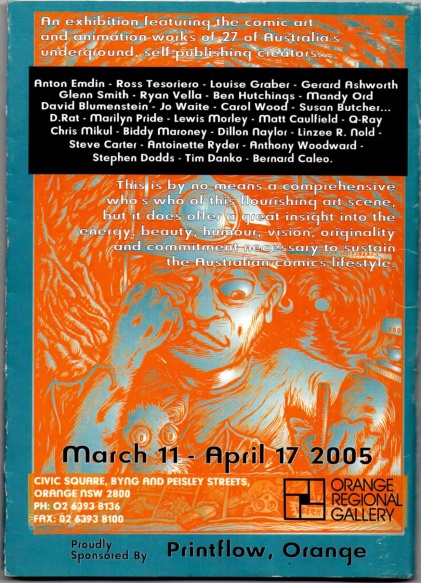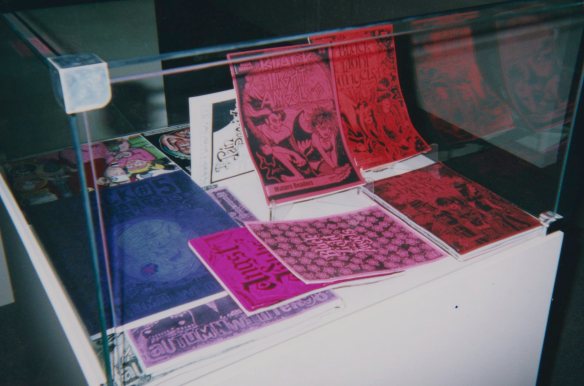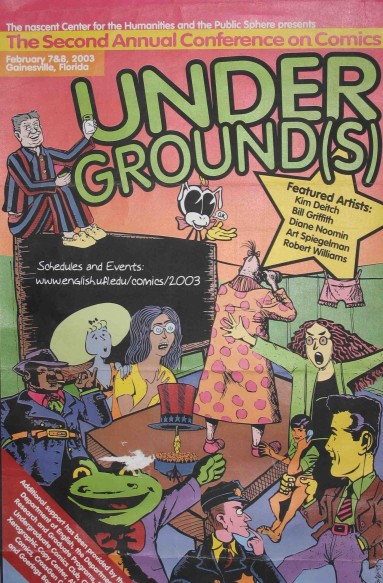Prior to the emergence of one of the larger comics and entertainment media conventions in Australia Supanova Pop Culture Expo the same management team, led by Daniel Zachariou, staged an event called Comic-Fest. This had a largely comics oriented focus compared with the subsequent broader span of Supanova in which comics represents just one of several entertainment media that included films, television series, toys, trading cards, computer games and the internet. There were two stagings in 2001, at Fox Studios in February then followed in September by Comi-Fest 2 at the Sydney Centrepont Convention Centre.

The Comic-Fest panel line-up, L to R, Dillon Naylor, Daniel Gloag, Amber Carvan and Ben Hutchings (Photo-©2001 Michael Hill).
For the September event with approval from the event director Daniel Zachariou I put together a panel discussion on Australian alternative comics by local creators Dillon Naylor, Daniel Gloag, Amber Carvan and Ben Hutchings who each talked about their own comics and answered questions I fired at them from the floor. A general discussion of the Australian comics scene followed.
Aside from the panel discussion the big attraction for the local small press was the opportunity afforded them to set up shop and trade their work on the commercial floor along with the imported comics. There was also the opportunity to meet fellow local creators and exchange comics, contact details and curry recipes.
Along with the commercial trading there was the social attraction of meeting and chatting with fellow comics creators.

Two funny blokes and even funnier cartoonists, Ross Tesoriero and Ben Hutchings (Photo-©2001 Michael Hill).
This is the fourteenth in a series of posts called Archives of Australian Comics History that document moments in the recent history of Australian comics, particularly alternative comics and the Australian Small Press. I started researching this subject in the late 1990s and it eventually led to my PhD thesis: Ph.D. Macquarie University, Division of Society, Culture, Media and Philosophy, A Study Of Contemporary Australian Alternative Comics 1992-2000 With Particular Reference To The Work Of Naylor, Smith, Danko And Ord, 2003. On completion of the research I donated the materials and comics I had collected to the National Library of Australia: Michael Hill Collection of Australian Comics.

























































